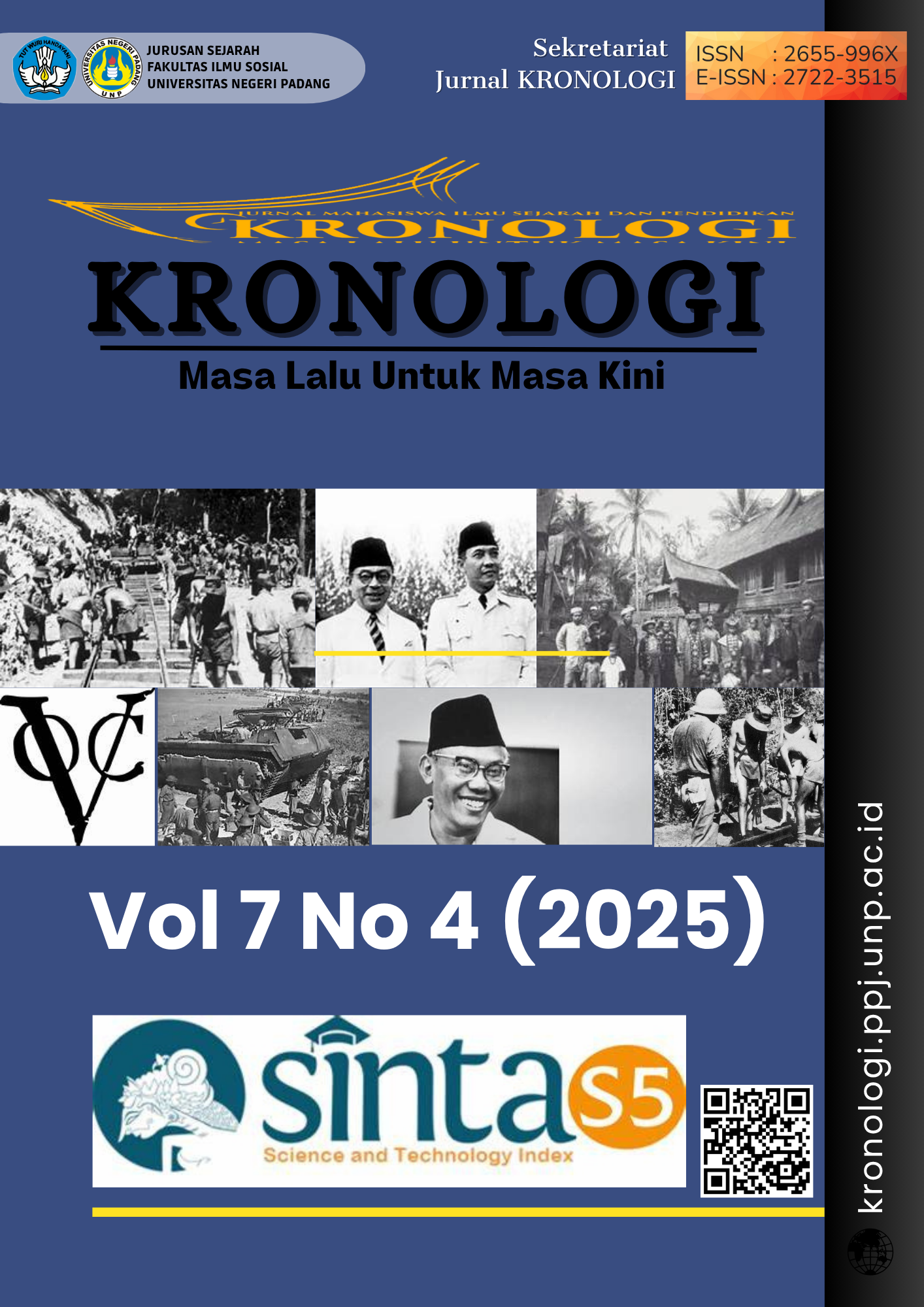Cerita Rakyat Nagari Sasak: Analisis Historigrafi Tradisional
Abstract
Folklore is an important part of traditional historiography. Apart from the fact that much of the richness of folklore remains undiscovered, the values contained within it also need to be preserved and passed down from generation to generation. In Minangkabau, every nagari (village community) has its own folklore many of which relate to the origins of the nagari, moral values, cooperation, and other aspects of communal life. This article seeks to explore the historiographical aspects of the folklore found in Nagari Sasak, Ranah Pesisir District, Pasaman Barat Regency. This article seeks to reveal the historiographical aspects contained in the folklore of Nagari Sasak, Ranah Pesisir District, Pasaman Barat Regency. The purpose of this article is to explore the richness of Nagari Sasak’s folklore and to examine the traditional historiographical elements within it. The research data were obtained from various sources, including interviews and online materials. This approach is possible because folklore is often rewritten, critiqued, and analyzed conceptually. The findings show that there are two main folktales in Nagari Sasak: “The Origin of Nagari Sasak” and “The Oath of the Crocodile and the Water.” An interesting aspect of these folktales lies in their transcription process, which marks a progressive step as the socialization and dissemination of local folklore extend beyond the Minangkabau region. Translating these transcribed stories into an international language would make them accessible to a global audience. The two folktales contain complex messages and values, including identity, morality, mutual cooperation, solidarity, helpfulness, love for one’s homeland, responsibility, harmonious relations between humans and nature, environmental awareness, and religious values. However, some anachronisms remain within the narratives. Therefore, this issue deserves attention from amateur historians and professional organizations to improve the accuracy and preservation of such traditional historiographical works.



2.jpg)






